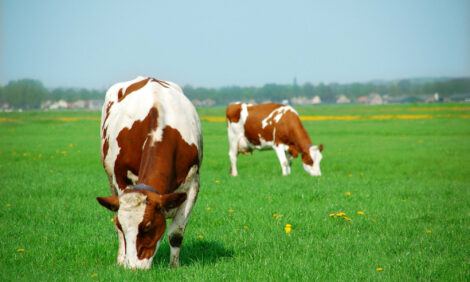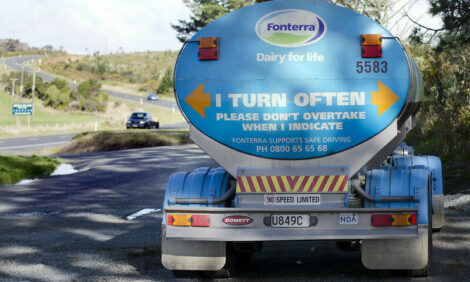



Australian Livestock Exports Near A$1 Billion
AUSTRALIA - Overseas demand for high quality Australian livestock delivered its strongest returns in seven years in 2009, with export earnings reaching a total of A$996.5 million* and cattle exports to Indonesia at a record high.
The number of live cattle exported from Australia increased by almost 10 per cent in 2009, contributing a record A$662 million to the Australian economy. Australia exported 948,240 cattle last year, an increase of 80,000 from the 868,510 head exported in 2008.
Goat exports also experienced significant growth in 2009, with a 22 per cent increase totalling 97,621 goats and a value of A$11.5 million.
While the volume of sheep exports softened by 15 per cent to 3.5 million head in 2009, the value remained stable at A$323 million, reflecting stronger sheep prices for the year for Australian sheep producers.
MLA Livestock Exports Manager Michael Finucan said it is encouraging to see that demand for high quality, healthy and disease-free Australian livestock remained strong in 2009 while many other industries’ revenues decreased significantly as a result of the global financial crisis.
“The volume of live cattle exported from Australia last year was at its highest level since 2002, with the value of these cattle at an all time high of A$662 million,” said Mr Finucan.
“The trade was also greatly beneficial in providing an alternative market to cattle producers when the global financial crisis impacted demand for beef in markets such as the United States and Japan.
“Indonesia remains Australia’s largest market for cattle, primarily from northern Australia, with the 768,133 cattle exported there last year representing 81 per cent of total export numbers.
“Demand for Australian cattle was strong on the back of a growing Indonesian economy, and the need for affordable protein to feed Indonesia’s rapidly growing communities.
“We also saw 59,000 head of high quality breeding dairy cattle exported in 2009, with 55 per cent of these going to China to support the ongoing development of its dairy herd,” said Mr Finucan.
Kuwait was again the largest market for Australian sheep in 2009, with the 950,000 sheep exported there representing 26 per cent of total exports. Bahrain was the second largest market, taking 747,000 head.
“The decline in exports of sheep to the Middle East was a result of the ongoing pressure on sheep supply in Australia. Saudi Arabia has dropped back to our third largest market after years of being our leading market because supply issues have increased the prices of Australian sheep,” said Mr Finucan.
“We are now seeing some countries in the Middle East replacing our sheep with sheep from North Africa, Iran and Eastern Europe because we cannot keep up with the strong demand from these markets.”
Malaysia remained the major destination market for Australian goats, with a market share of 91 per cent.
“A total of 99 per cent of all goat exports were delivered by air, a fast and efficient way of delivering specialised small consignments to our markets to meet their needs,” said Mr Finucan.
Mr Finucan said in addition to the strong export volumes and value, delivery rates remained high with over 99 per cent of all Australian livestock delivered fit and healthy at their destinations after being well cared for during the journey.
TheCattleSite News Desk


